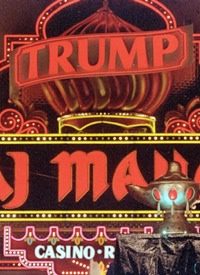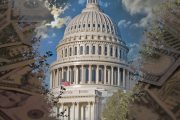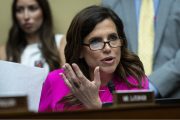
Trump told George Stephanopoulos last Friday, “I’ve used the laws of this country to pare debt…. We’ll have the company [that’s in financial trouble] … we’ll throw it into a chapter [11 bankruptcy]. We’ll negotiate with the banks. We’ll make a fantastic deal. You know, it’s like on The Apprentice: It’s not personal. It’s just business.”
Trump should know, having completed his fourth bankruptcy just two years ago. At the beginning of the financial crisis in 2008, Trump’s company, Trump Entertainment Resorts, missed a $53 million interest payment to its bondholders, which forced the company into bankruptcy. Not only did the bondholders take a beating, the stockholders did too, with the price of the stock declining from $4 per share to 23 cents. It was nothing personal, just business as usual for Trump.
Trump’s first bankruptcy, back in 1991, cost him dearly as he signed a personal note to obtain financing to buy the Taj Mahal in Atlantic City. The financing consisted mostly of high-risk (junk) bonds, and when the economy went into decline, so did Atlantic City. Nearly $3.4 billion of lenders’ money was involved. As Lynn LoPucki, UCLA law school professor, noted, “The first one was a really big hit for him. They had him personally (liable), and he ended up taking substantial [personal] losses in that bankruptcy. He also had the humiliation of having some bankers deciding how much money he could spend [on his] monthly budget.”
[The banks] could have simply taken everything he had right then, but they wanted his cooperation. There’s an old saying: If you owe the bank a little, you’re at their mercy. If you owe the banks a lot, the banks are at your mercy. They saw the best way for him to repay the money was to keep The Donald afloat.
Trump’s deal turned out quite nicely, for Trump. By the time the dust had settled, Trump had had to sell his yacht and his airplane, but he was allowed to keep half of his original interest in his company. A bankruptcy expert at the University of Michigan, John Pottow, explained that it often is in the best interests of the creditors to keep funding the company in the hopes that it will turn around and generate the ability to repay the loans. Pottow said, “Banks will take considerable haircuts. It’s sort of like you have a sick patient so you cut off a couple [of] toes to stop the gangrene [from spreading]. Now [the patient’s] missing a few toes, but he’s still alive.”
Just a year later, Trump was back in bankruptcy court, this time because his Trump Plaza Hotel in Atlantic City was in trouble. The banks were owed nearly half a billion dollars, but they gave Trump the same deal as before: Keep half the hotel, give the other half to us, and take your time in repaying what you owe us. Trump came out of the second bankruptcy smelling like a rose.
Fast forward to 2004: This time, Trump Hotels and Casinos was in trouble, owing $1.8 billion in debt. The banks made a similar deal as before, allowing Trump to keep a 25 percent interest in the company, lowering the interest rate on the loans, and, remarkably, loaning him another $500 million to make improvements on the properties!
By the time 2008 rolled around, Trump was an old hand in the art of bankruptcy. As noted by Doug Heller, the executive director of Consumer Watchdog, “Here’s a guy who’s failed so miserably so many times and it’s not as though he had to claw his way back after seven years in credit hell. He just said, ‘OK, this isn’t my problem anymore.’ For him, [bankruptcy has] just been a platform to the next money-making scheme.”
Trump is also learning the art of seizing private property through eminent domain. Wanting to expand the parking lot for his Trump Plaza hotel in Atlantic City in 1993, he needed the real estate underneath Vera Coking’s house. When she refused to sell, Trump persuaded Atlantic City to condemn her property. She went to court, aided by the Institute for Justice, which successfully defended against the taking. Trump also failed in his attempt to obtain some private real estate that he needed for his Balmedie, Scotland, golf course. Local landowners put together “Tripping Up Trump” to resist the takeover, which succeeded to such an extent that Trump ended up denying there was ever any such attempt in the first place, saying, “We have no interest in compulsory purchase and have never applied for it.”
But Trump likes the power of eminent domain to expand. When Neil Cavuto asked The Donald about the highly controversial Supreme Court ruling, Kelo v. City of New London. Trump said he supported the decision “100 percent.”
The fact is, if you have a person living in an area that’s not even necessarily a good area, and government, whether it’s local or whatever, government wants to build a tremendous economic development, where a lot of people are going to be put to work and make [an] area that’s not good into a good area, and move [that] person that’s living there into a better place — now, I know it might not be their choice — but move the person to a better place and yet create thousands upon thousands of jobs and beautification and lots of other things, I think it happens to be good.
The Donald continues to tell anyone within earshot of a microphone or a TV how great a businessman he is. All that can be seen from his history of bankruptcies and eminent domain “takings” is that he is nothing more than a great manipulator.
Photo of Donald Trump: AP Images



